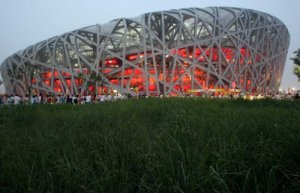John Massengale, a prominent architect and sometime colleague of Robert A.M. Stern, has a great recent post about all of the new architecture in Beijing. Many architects have been praising the scale and audacity of both the Beijing building boom in general and the ostentation of many of its new starchitect-designed buildings. In the same breath they’ve often damned New York City’s supposed recent failure of ambition by comparison. Massengale offers a different take:
. . the architects of 100 years ago had very different goals than the Starchitects of today, and so they made a very different place than Koolhaas & Co. want to make. As Classical architects, they believed the first job of an architect was to make his building reinforce and improve the public realm. . . Starchitects believe in the object building (their monument to themselves) more than they believe in the public realm and the common good it symbolizes and houses.
. . . Koolhaas, a Dutchmen, also thinks European cities are bad models for urban design today (although of course he lives in an old building, in an old neighborhood in an old city, London). He says Atlanta and Houston are better.
He’s referring to Rem Koolhaas, who once designed a concept city
which featured “repetitive buildings centered on an airport . . .his argument was that in its profound sameness, the generic city was a more accurate reflection of contemporary urban reality than nostalgic visions of New York or Paris.” In other words, as an architect he would rather design a brutally soul-deadening city than risk being accused of—quelle horreur!—nostalgia. And the main architecture critic for the New York Times feels him 100% on that.
Keep that in mind the next time you wonder why our cities are alienating. Some of our most famous architects design them that way on purpose, and our most prominent critics approve.
More from Beliefnet and our partners

